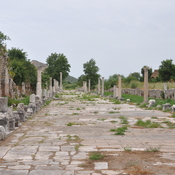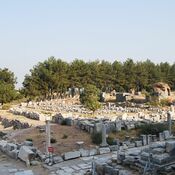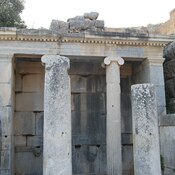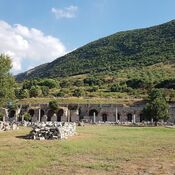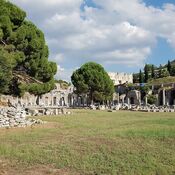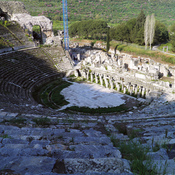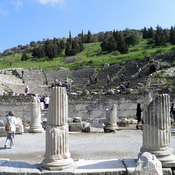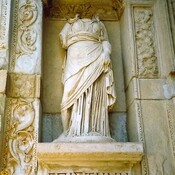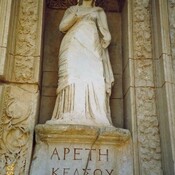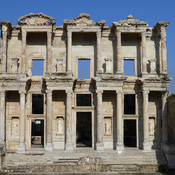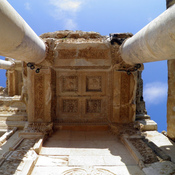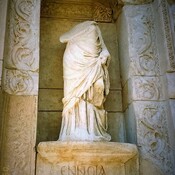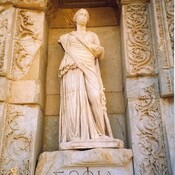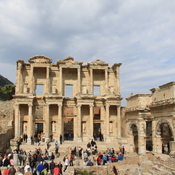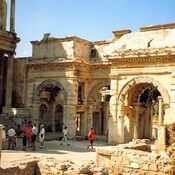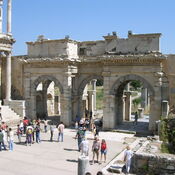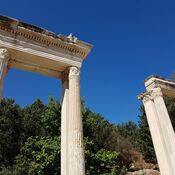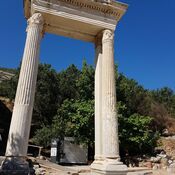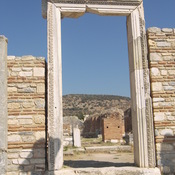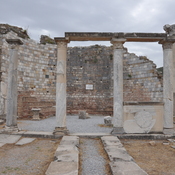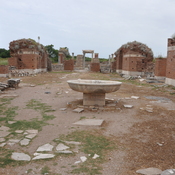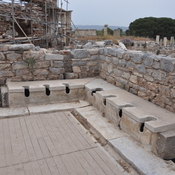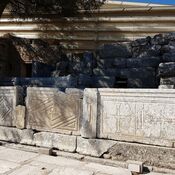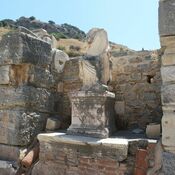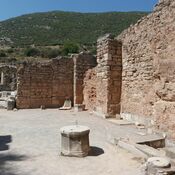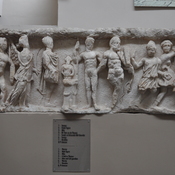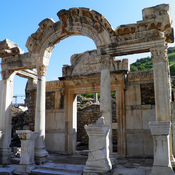Il n'y a pas une annotation en français. Présenté est une annotation en Néerlandais.
Ephesus (Efeze) was in de oudheid een grote Ionische haven- en handelsstad. Artemis (Diana) was de plaatselijke godin. De tempel voor Artemis te Efeze werd wel als één van de zeven wereldwonderen beschouwd. Deze tempel had een afmeting van 105 bij 50 meter, met 127 Ionische zuilen van 18 meter hoog.
Efeze beleefde een bloeitijd gedurende het Romeinse Rijk. De stad is vooral bekend van twee van de Bijbelboeken: De brief van Paulus aan de Efeziërs en Handelingen van de Apostelen. De stad raakte in 431 in het nieuws vanwege het Concilie van Efeze.
In latere tijden verzandde de haven en kwam de stad in het binnenland te liggen. Daardoor werd haar economische positie onhoudbaar en werd de stad uiteindelijk verlaten. 1
Références
- ↑Wikipedia: Efeze
Ephesus (Selçuk): ancient Greek town in western Turkey, one of the largest and best excavated cities of the ancient world. It is known as Apasa a king`s Uhhaziti (the last independent king of Arzawa) capital1.
See:
- http://www.livius.org/ei-er/ephesus/ephesus_photos1.html
- Ekrem Akurgal, Ancient Civilisations and Ruins of Turkey: From Prehistoric Times Until the End of the Roman Empir, II ed., Istanbul 1970, pp.142-171
- K. Lawson Younger, Jr., Ancient Conquest Accounts: A Study in Ancient Near Eastern and Biblical History Writing, Bloomsbury Publishing 1990,
Références
- ↑K. Lawson Younger, Jr., 1990, pp. 150-151
Ephesus (Efeze) was in de oudheid een grote Ionische haven- en handelsstad. Artemis (Diana) was de plaatselijke godin. De tempel voor Artemis te Efeze werd wel als één van de zeven wereldwonderen beschouwd. Deze tempel had een afmeting van 105 bij 50 meter, met 127 Ionische zuilen van 18 meter hoog.
Efeze beleefde een bloeitijd gedurende het Romeinse Rijk. De stad is vooral bekend van twee van de Bijbelboeken: De brief van Paulus aan de Efeziërs en Handelingen van de Apostelen. De stad raakte in 431 in het nieuws vanwege het Concilie van Efeze.
In latere tijden verzandde de haven en kwam de stad in het binnenland te liggen. Daardoor werd haar economische positie onhoudbaar en werd de stad uiteindelijk verlaten. 1
Références
- ↑Wikipedia: Efeze


